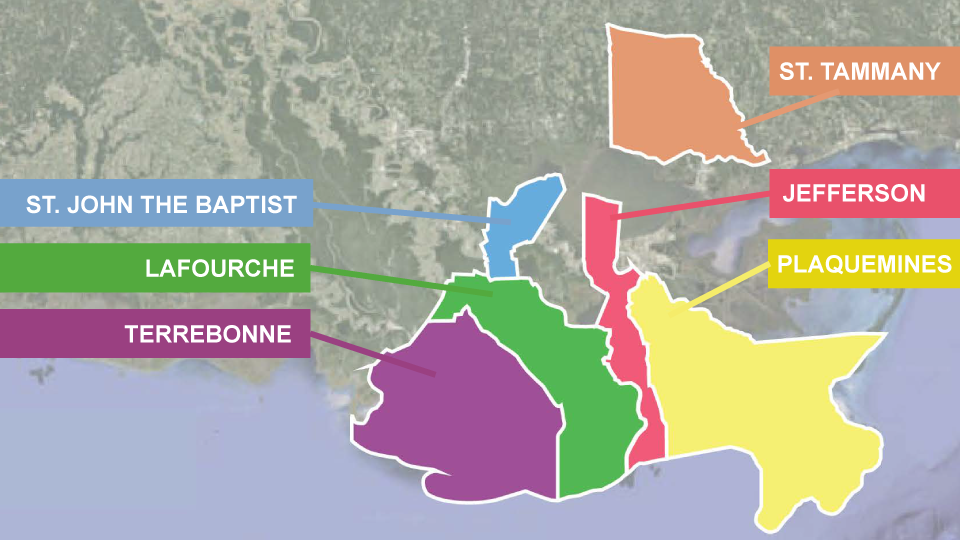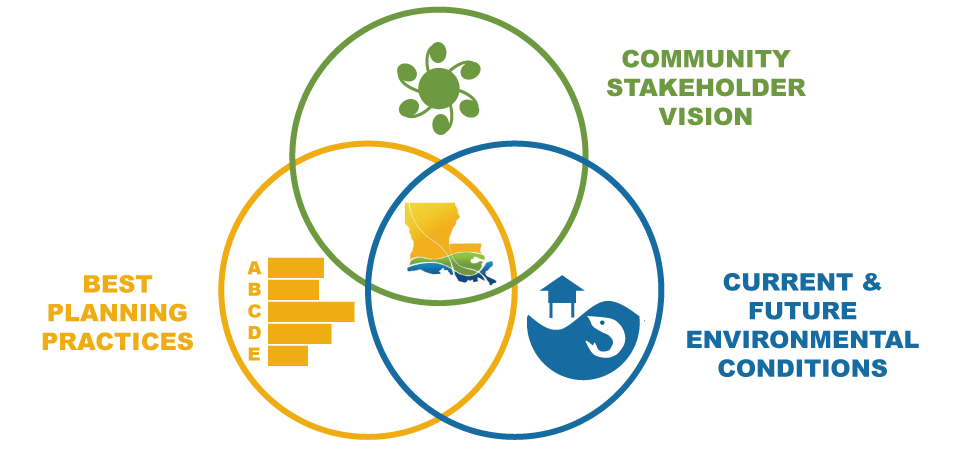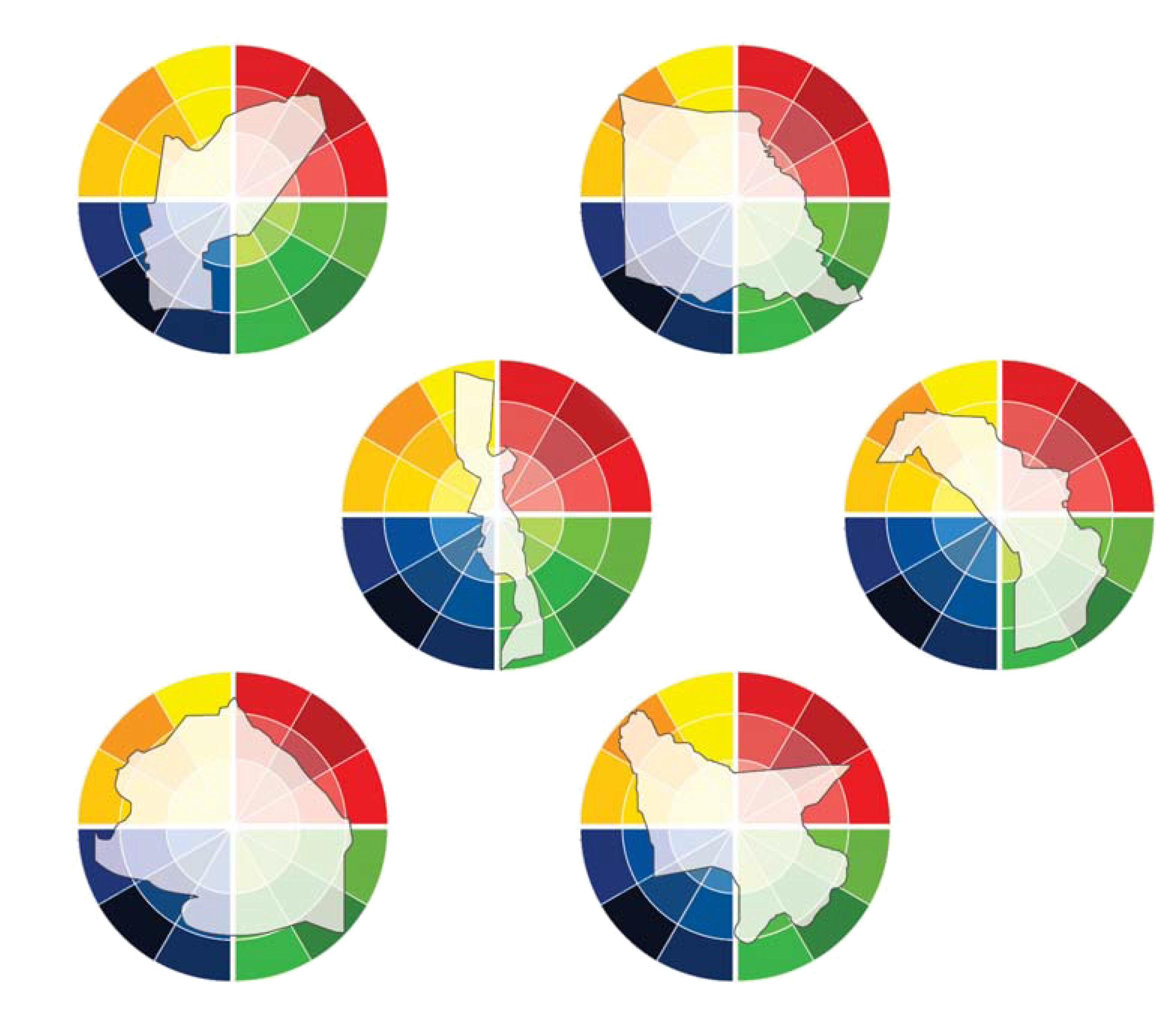Co-Design Process Overview
To address our changing coastline and increased flood risk across our communities and economies, LA SAFE introduced an innovative approach to community adaptation. Through the State’s partnership with FFL, a first of its kind collaboration between a state government and a philanthropic organization to address climate change and adaptation, LA SAFE assembled partners from across sectors and committed to a community-driven planning process — including 71 individual public events across the six-parish region engaging nearly 3,000 individual residents.
In order to prepare for a more resilient future, LA SAFE utilized an integrated approach combining planning expertise, science, and most importantly, community members across the coast who face the challenge firsthand. The LA SAFE planning effort was iterative, continually moving between outreach and engagement, research and analysis – and the LA SAFE team met with stakeholders and community partners every step of the way. The process relied on grassroots input from start to finish and will continue to engage and encourage residents through Foundation for Louisiana’s LEAD The Coast Program far beyond the completion of LA SAFE adaptation projects.

Is your parish not one of our target parishes?
In a process that shares power, community members get to shape the goals, come up with solutions, and help choose which should be implemented first. All participants get to roll up their sleeves and add ideas to the plans, as well as make decisions on what will happen.
To prioritize relationships means that we take care of one another and take time to actually get to know each other as people. It means that we do not treat people just as a source of survey data or as a means to an end. We value building relationships and trust with community members on the front lines of our coastal challenge.
This process will include all points of view, which means that we value the many kinds of diversity in our communities—and that we need everyone’s ideas to come up with the smartest solutions. To include all points of view, we have to bring all community members to the table—and we have to make sure that everyone feels respected and comfortable to share their particular point of view.
To use all kinds of knowledge means that we give equal respect to different kinds of knowledge, whether the knowledge comes from technical training or formal education, or whether it comes from life experiences, emotional responses or instinct. When we use all kinds of knowledge, we open up so many more possibilities for brilliant ideas.
We want to test solutions early & often, which means that we share and talk through ideas for solutions before we develop them in detail. We want the community to come up with ideas, choose what is most important, and help figure out how they will work. Because we are not leaping to any final solutions, we will have plenty of time to go back or change plans along the way.


Holistic Approach
As Louisiana invests to restore our coast, we must consider how to best adapt to new challenges and opportunities. Considering demographic, social, economic and environmental shifts helps us to plan in our communities, across our parishes and within the broader region toward a stronger and safer Louisiana.
We often think of land loss and coastal change as environmental challenges, but we increasingly experience the effects of those environmental issues inside our communities and across our economies. Our wetland landscapes provide a natural buffer against flooding and extreme storm events. As those swamps and marshes subside and diminish, our communities and economic drivers embedded within them are more vulnerable to storms. Flood events damage businesses, destroy homes and communities while disrupting daily life. We must consider flood risk as we invest to maintain our everyday services, our schools, our hospitals and our infrastructure. We must better understand when, where, why and how residents are already moving from one community to another. We must consider future flood risk from continued land loss as our communities grow and we plan new development, even with the tremendous investments to restore our protective wetland buffer.
These challenges are not purely environmental ones; they impact our communities in a collection of ways. We must plan for our communities and culture as well as our economy and jobs as we consider our environment and sustainability.

Diverse Expertise
Our team includes planners, designers, community leaders, risk modelers, scientists, sociologists, architects, demographers, and most importantly, community members from across Louisiana’s coast. This diversity of expertise led LA SAFE to create a truly shared community vision, incorporating our best understanding of current and future environmental conditions, and learn best planning practices.
Together, LA SAFE developed adaptation strategies that will support our communities and economies while addressing environmental risk today and well into the future.
Connecting Local to Regional
Through the LA SAFE process, each parish now has a strategy that includes programs, policies and projects to support southeast Louisiana communities over the next 50 years, as land loss and flood risk continue to increase. These challenges are ones we expect to face over decades and generations.
Through September 2017, we had engaged almost 1,500 residents. One thing that we heard from them is that issues related to stormwater, transportation and development policy cross parish boundaries. At the same time, within our parishes, individual communities experience very different effects of land loss and increased flood risk. With this feedback, we’ve been able to identify local, regional, and state policy solutions, as well as ways for governments to coordinate more effectively across political boundaries.

